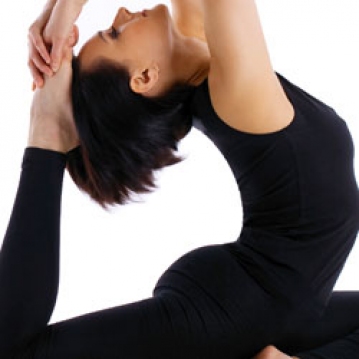
 |
Randomly ask a hundred people in America what Yoga is, and the number one response you’ll receive will probably be poses. Following close behind, will most likely be classes. If this were a question on the TV game show Family Feud, it’s likely that none of the adrenaline - crazed contestants or the studio audience of one hundred would say, “yoke.” If the Bayers happened to be one of the competing families, and yours truly answered “yoke,” because I experience Yoga in the Higher Self Meditation that I founded last year, I’d be greeted by the game show’s inimitable buzzer that signals a loud and uncompromising “NO,” and probably a bop on the head from my wife. And yet, that would have been the correct answer. Yoke, that is, not bop. Yoga is a Sanskrit word, whose precise meaning is “yoke,” from the root yuj, which signifies to join, unite, or attach. The yoking is individual consciousness to Universal Consciousness, the conscious mind to the Transcendent, the thinking mind to the source of thought, that which thinks to that which Is. All those expressions are saying the same thing in slightly different ways. In the studio audience of Family Feud, there’s not much awareness of the Universal unless, of course, you’re referring to Universal Studios, the amusement parks that shadow the Disney empire, in Los Angeles and Orlando. |
In the leadoff verse of the fourth chapter of this 18-chapter, 700-verse poem, Krishna says, in anything but haziness, “I proclaimed this imperishable Yoga to Vivasat, Vivasat declared it to Manu and Manu told it to Ikshvaku.” The date of that teaching is said to be in the beginning of creation, in order to empower the military defenders of civilization, in order to maintain dharma (cosmic law) and to ensure the ways of righteousness for the thriving of society.
The Hatha Yoga asanas (postures) that people in the 21st century think of when they sign up for a series of yoga classes, weren’t compiled until the 15th century by Yogi Swatmarama. They were developed as part of a preparatory stage of physical purification for higher meditation practice. Its developer also thought it would enable the body to become more limber and flexible for the long periods of sitting in meditation that the practitioner would undertake to experience Yoga, the uniting of his individuality with his universality.
To think of Yoga as a system of physical postures, therefore, is a simplification. To think of it as a series of group classes, well, you can do the math. Speaking of math, Americans spend just shy of $6-billion annually on yoga classes and products, including equipment, clothing, vacations and media. All this is according to a 2008 study conducted by the Harris Interactive Service Bureau on behalf of Yoga Journal. The $6 billion is some 87 percent higher than it was just four years before, when the previous survey was done. Practitioners total nearly 16 million Americans.
East has most definitely met West. According to a recent article in Bloomberg Business Week, playfully entitled , “The Missionaries of Position,” the past 10 years has seen a quantum shift in yoga trademarking: There are 2,213 trademark applications that contain the word “yoga,” more than 2,000 of which have been filed since 2001, says our government’s Trademark Electronic Search System.
If you experience Yoga—namely your Universal nature, you’ll emerge far more peaceful than when you went into that sitting of meditation, and you may chuckle at one of those trademarks designed for those whose idea of mountains are not quite the Himalayas. Its name: “Hillbilly Yoga.”






















